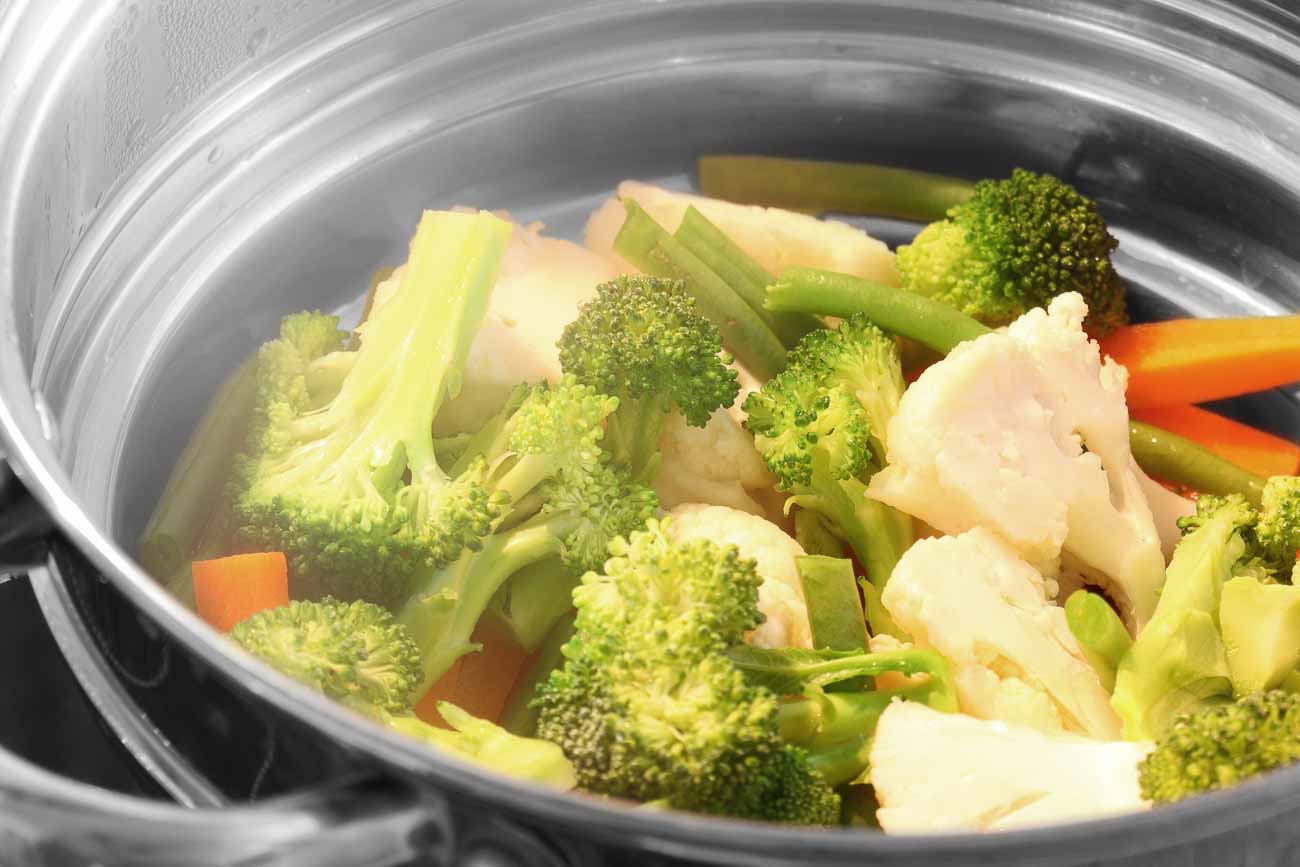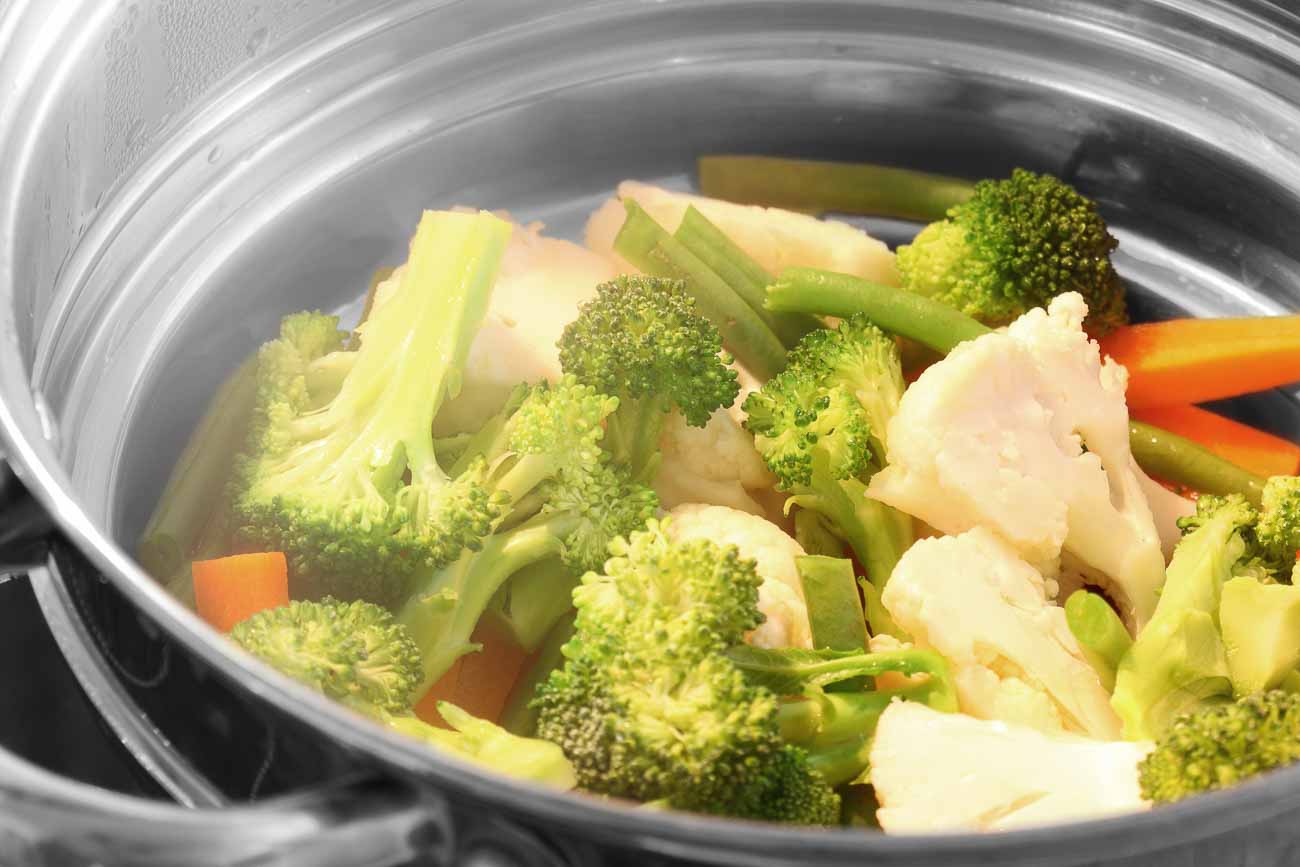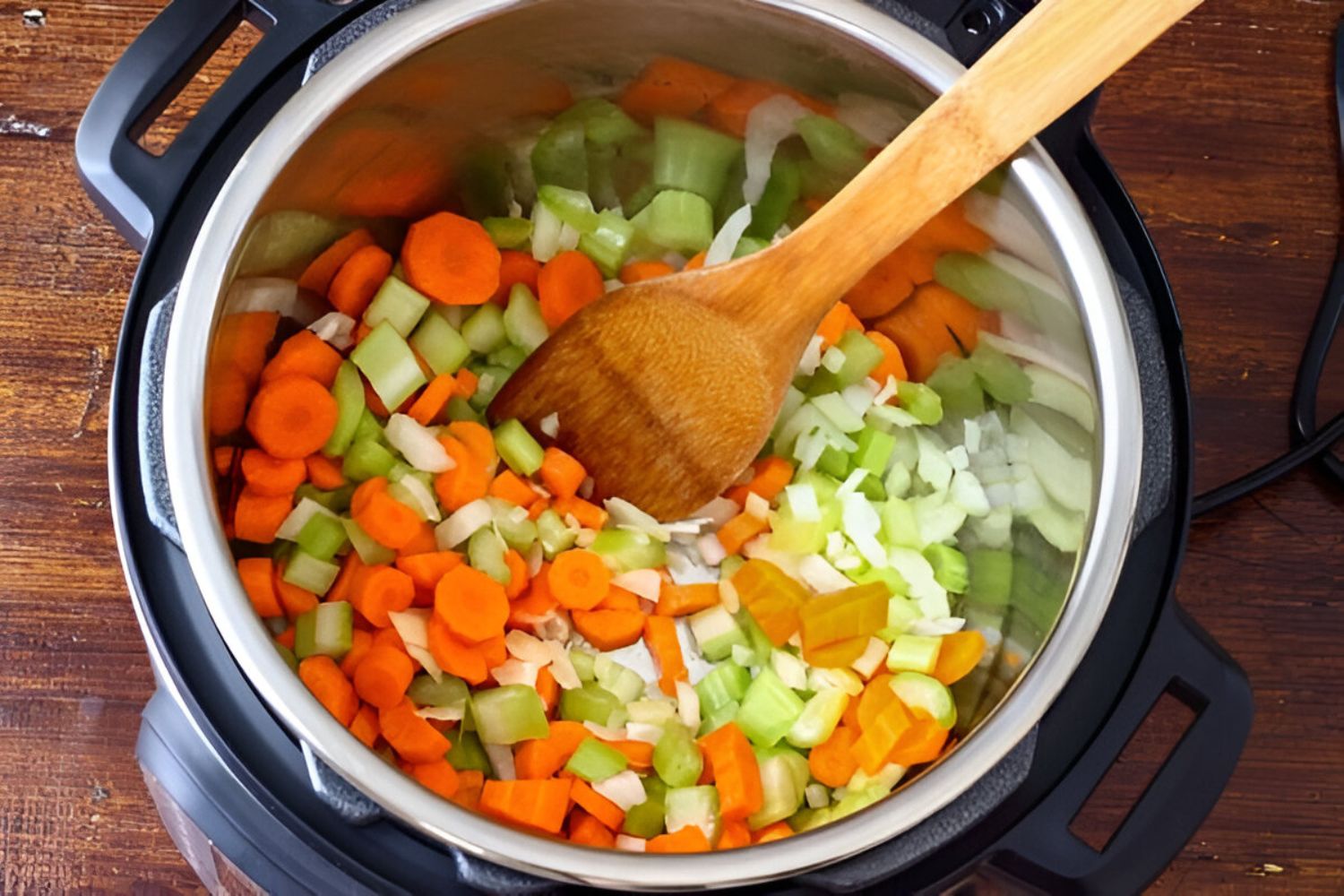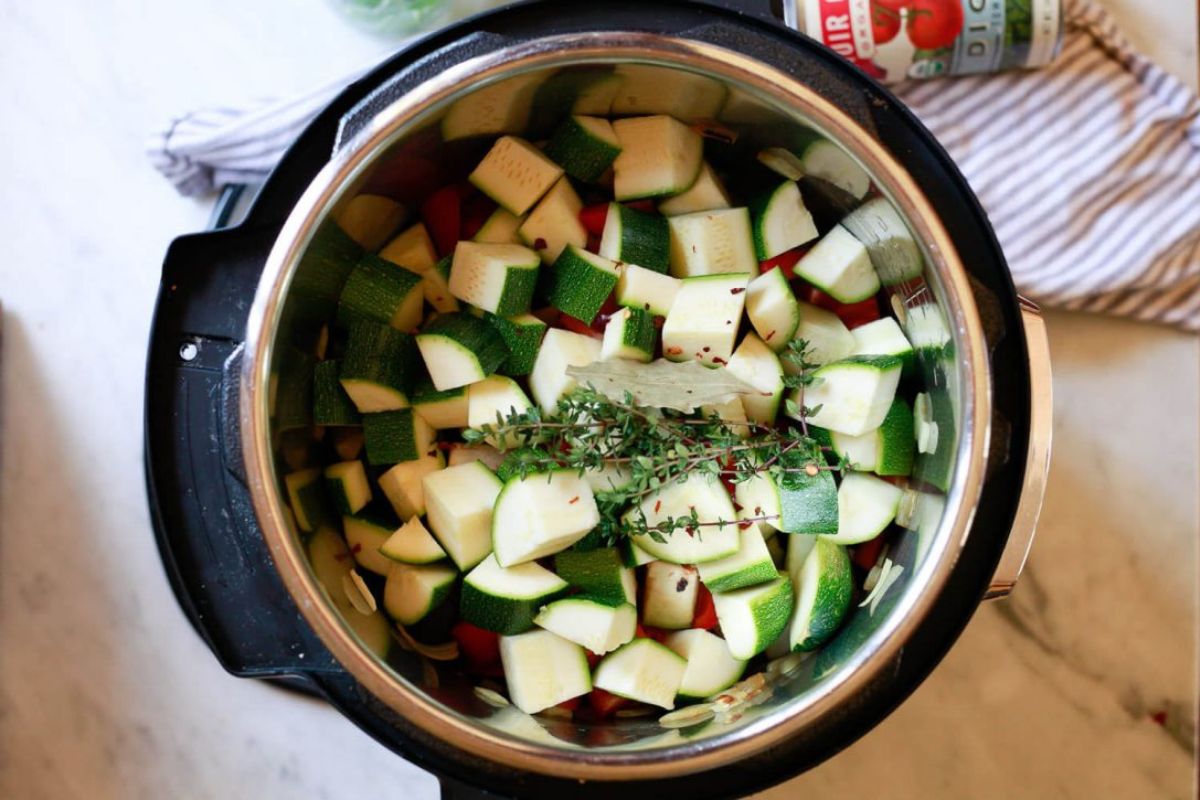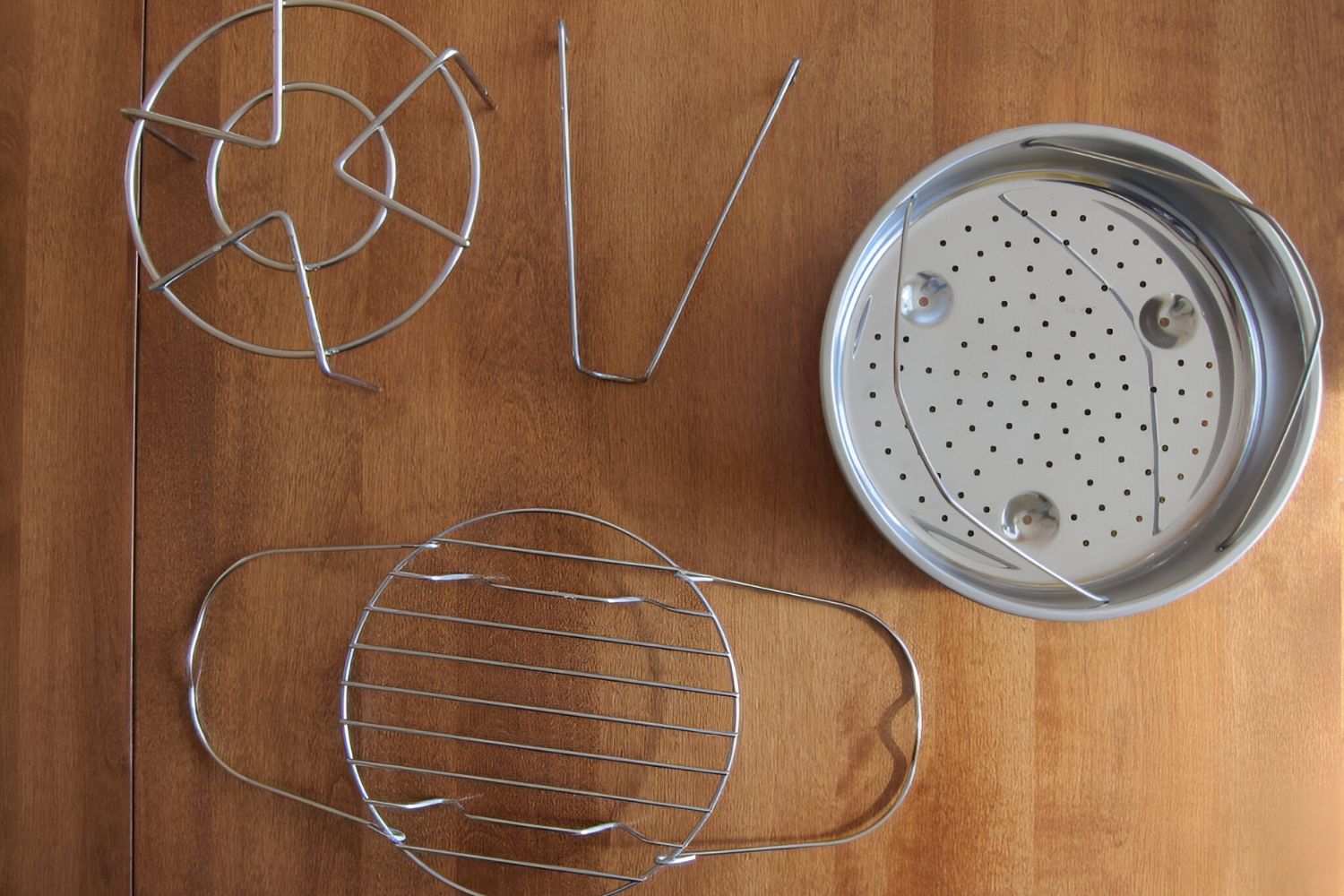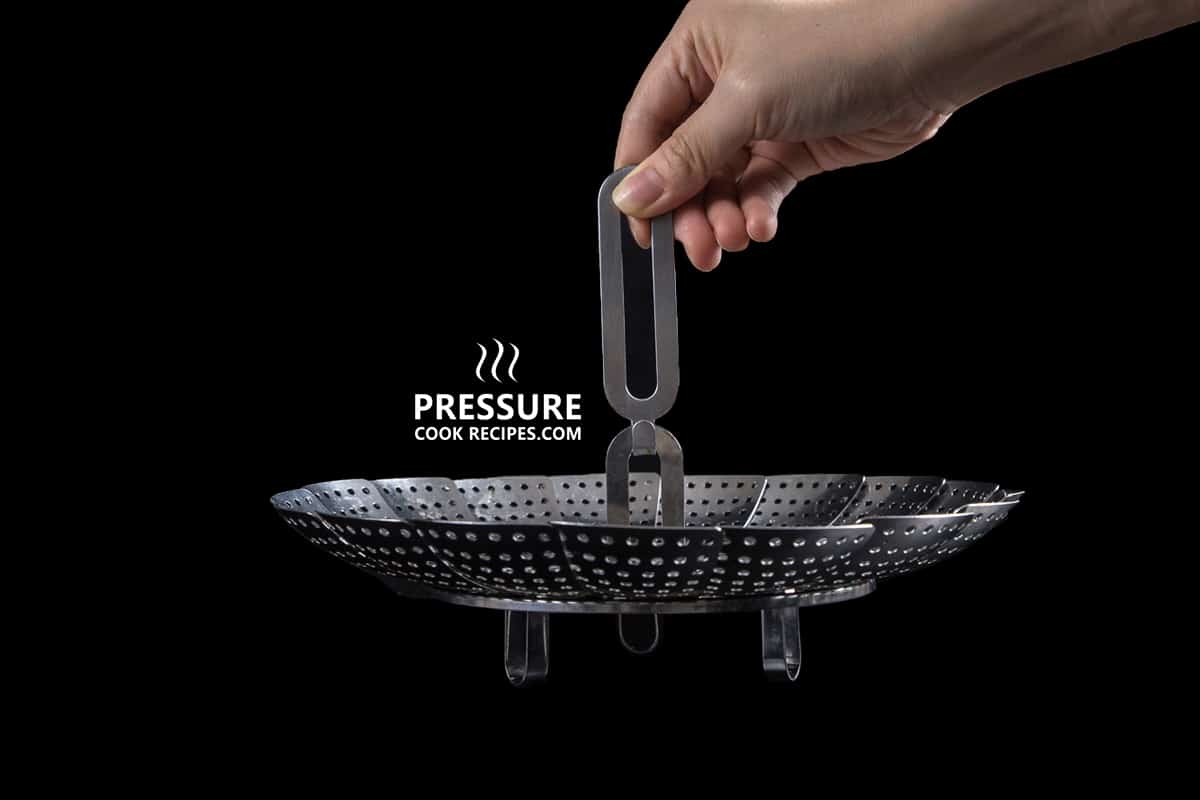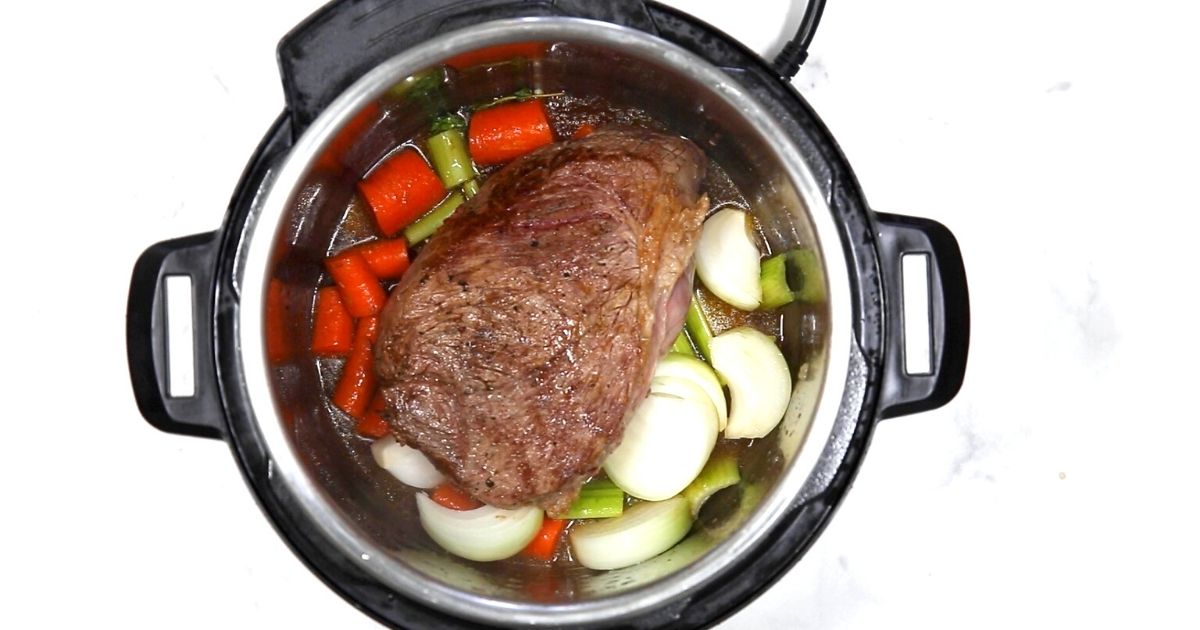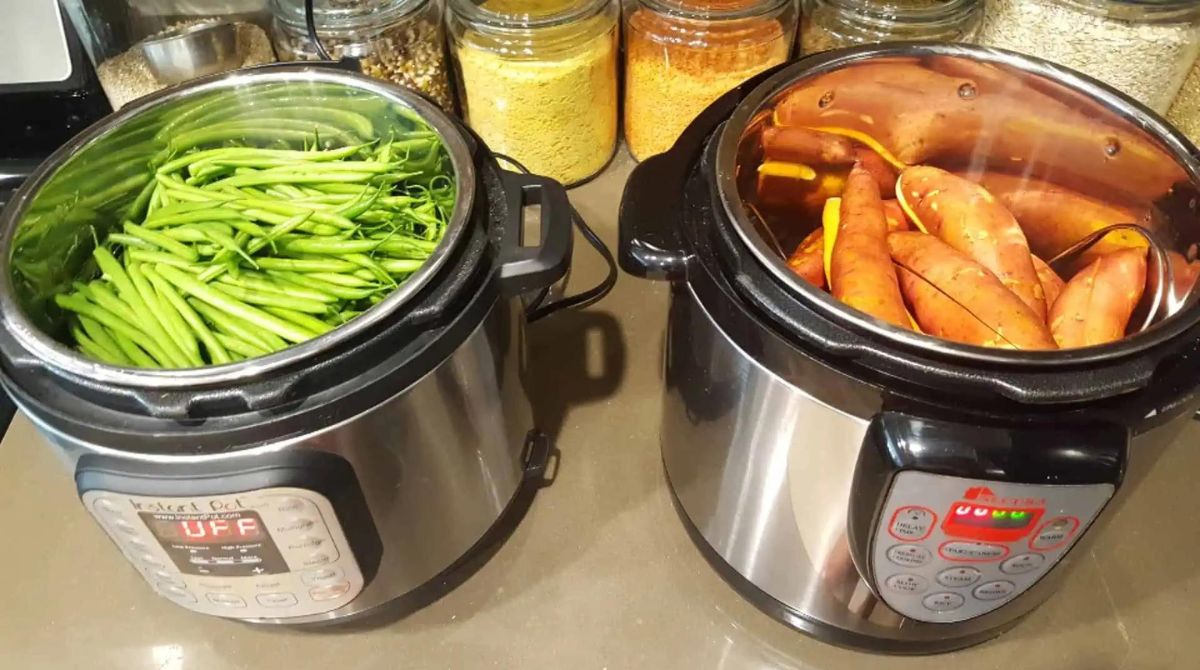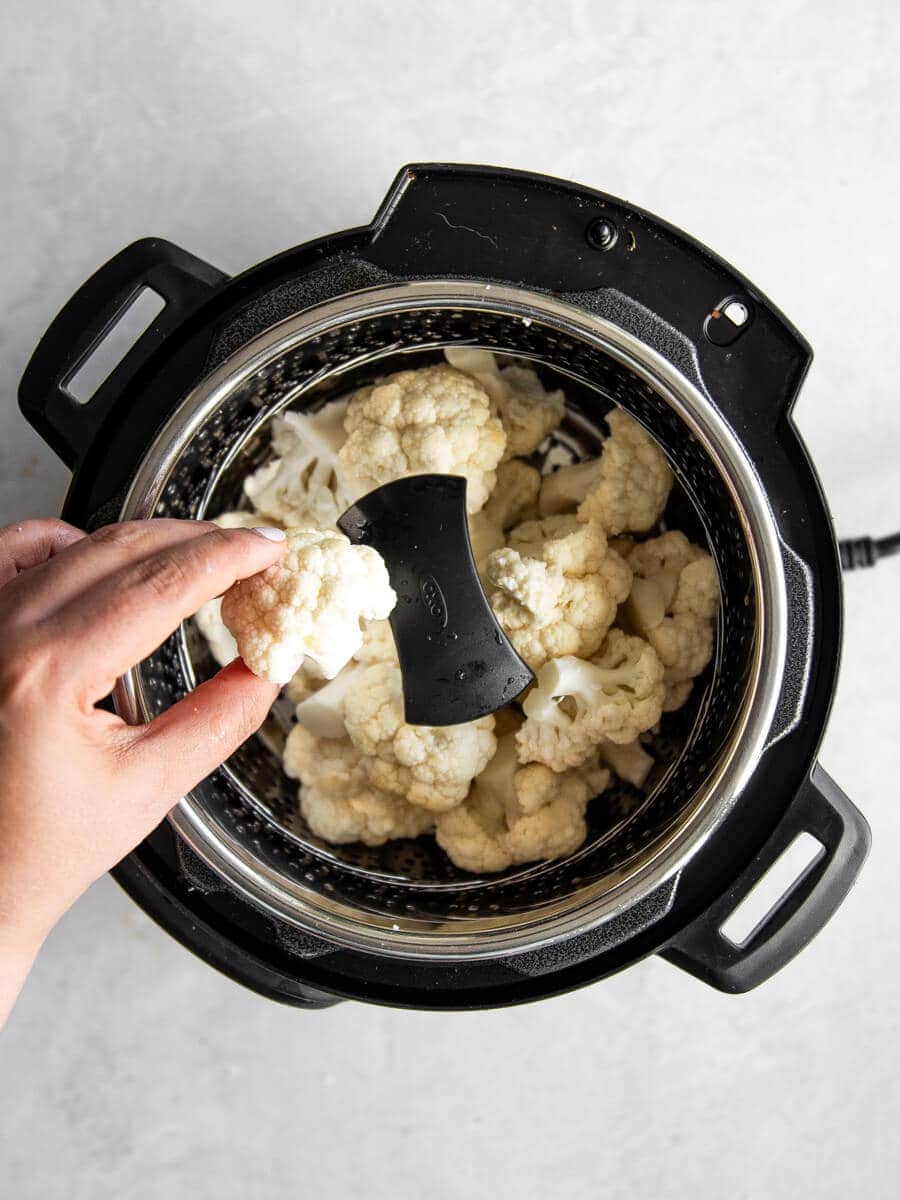Introduction
Welcome to the ultimate guide on how to steam vegetables in an electric pressure cooker. Steaming vegetables is not only a quick and easy way to prepare them, but it also helps to retain their nutrients and natural flavors. With the convenience of an electric pressure cooker, you can enjoy perfectly steamed vegetables in a fraction of the time compared to traditional stovetop methods.
In this guide, we will explore the benefits of steaming vegetables, how to choose the right electric pressure cooker for your needs, the necessary steps to prepare your vegetables, and the proper operation of the cooker. By following these steps, you’ll be able to effortlessly achieve tender and flavorful steamed vegetables every time.
Steaming vegetables has numerous advantages. Firstly, it helps to preserve the vibrant colors of the vegetables while maintaining their natural textures. This is particularly beneficial for green vegetables like broccoli, asparagus, and spinach, which tend to turn dull and mushy when overcooked using other methods. Secondly, steaming helps to retain the essential nutrients present in the vegetables, such as vitamins, minerals, and antioxidants. Unlike boiling, which can cause the nutrients to leach into the cooking water, steaming ensures that they stay locked within the vegetables. Finally, steaming vegetables requires minimal oil, making it a healthier option for individuals who are conscious of their calorie intake or following a specific diet plan.
To get started with steaming vegetables in an electric pressure cooker, it’s important to choose the right appliance. The market offers a range of electric pressure cookers, each equipped with various features and capabilities. It’s essential to consider factors such as size, cooking programs, and safety features. Look for a model that suits your needs and provides options for specific vegetable steaming settings.
In the following sections, we will discuss how to properly prepare your vegetables for steaming, how to add water and seasoning for flavor, and the step-by-step process of setting up and operating your electric pressure cooker. Whether you’re a seasoned cook or a novice in the kitchen, this guide will help you master the art of steaming vegetables with ease.
Benefits of Steaming Vegetables
Steaming vegetables is one of the healthiest cooking methods as it offers numerous benefits for both your body and taste buds. Here are some of the key advantages of steaming vegetables:
- Retains Nutrients: Steaming vegetables helps to preserve the essential nutrients present in them. Unlike boiling, which can cause nutrient loss due to leaching, steaming ensures that the vitamins, minerals, and antioxidants remain intact.
- Preserves Colors and Textures: Steaming vegetables helps to retain their vibrant colors and natural textures. This is especially important for green vegetables like broccoli, which can easily become dull and mushy when overcooked.
- Enhances Flavor: The gentle heat of steaming allows the vegetables to retain their natural flavors. Unlike boiling or frying, which can sometimes result in loss of taste and texture, steaming ensures that the vegetables maintain their deliciousness.
- Promotes Digestion: Steamed vegetables are easier to digest compared to raw or fried ones. The even and gentle cooking process of steaming breaks down the fibers in the vegetables, making them more digestible and easier on the stomach.
- Low-Calorie Cooking: Steaming vegetables requires minimal or no added oils, making it a low-calorie cooking method. This is ideal for those looking to manage their calorie intake or maintain a healthy weight.
- Quick and Efficient: Steaming vegetables in an electric pressure cooker is a time-saving method. The high pressure and quick cooking time of the appliance reduces the overall cooking time, allowing you to enjoy perfectly steamed vegetables in no time.
By incorporating steamed vegetables into your diet, you can enjoy a nutritious and tasty addition to your meals. Whether you’re a health-conscious individual or simply looking for a delicious way to incorporate more vegetables into your diet, steaming is a versatile cooking method that ticks all the boxes. From maintaining nutrients to enhancing flavors, the benefits of steaming vegetables are plentiful.
Choosing the Right Electric Pressure Cooker
When it comes to steaming vegetables, having the right electric pressure cooker can make a noticeable difference in the cooking process. Here are some key factors to consider when choosing an electric pressure cooker:
- Size: Electric pressure cookers come in various sizes, ranging from small to large. Consider your cooking needs and the size of your household when selecting a cooker. If you plan to steam larger quantities of vegetables or prepare meals for a larger family, opt for a larger-sized cooker.
- Cooking Programs: Look for an electric pressure cooker that offers specific programs for vegetable steaming. These programs ensure that the cooker automatically adjusts the temperature and cooking time to achieve optimum results for steaming vegetables.
- Pressure Settings: Different vegetables require different pressure levels for optimal steaming. Choose an electric pressure cooker that offers adjustable pressure settings so you can customize the cooking pressure according to the vegetables you are steaming.
- Safety Features: Safety is paramount when using an electric pressure cooker. Look for models that have safety features such as pressure release valves, locking mechanisms, and automatic shut-off functions. These features help prevent accidents and ensure peace of mind while cooking.
- Durability and Quality: Investing in a high-quality electric pressure cooker will ensure its longevity and durability. Look for reputable brands known for their quality construction and reliable performance.
- User-Friendly Features: Consider the user-friendly features offered by the electric pressure cooker. Look for features such as intuitive control panels, clear and easy-to-read display screens, and user-friendly buttons, which make operation and programming a breeze.
It’s also worth considering additional features like delayed start timers, keep warm functions, and removable inner pots for easy cleaning. Remember to read customer reviews and compare different models to make an informed decision that aligns with your cooking preferences and needs.
By choosing the right electric pressure cooker, you’ll have a reliable and efficient appliance that will not only make steaming vegetables a breeze but also offer versatility for various other cooking needs. Invest in a quality cooker that suits your requirements, and you’ll be well on your way to enjoying perfectly steamed vegetables every time.
Preparing the Vegetables
Before you begin steaming your vegetables in the electric pressure cooker, it’s important to properly prepare them. Here’s how:
- Cleaning: Start by washing your vegetables thoroughly under cold running water. Remove any dirt or debris from the surface, paying extra attention to leafy vegetables like spinach or kale.
- Trimming and Cutting: Trim off any stems, ends, or blemishes from the vegetables. Depending on the size and shape you desire, you can choose to cut them into bite-sized pieces or leave them whole.
- Uniform Sizing: To ensure even cooking, try to cut or chop the vegetables into uniform sizes. This will help them cook at the same rate, resulting in tender and evenly steamed vegetables.
- Peeling (Optional): Some vegetables, like carrots or potatoes, may require peeling. If desired, use a peeler to remove the outer skin before steaming. This step is subjective and can be skipped if preferred.
- Seasoning: At this point, you can choose to season your vegetables. Common options include adding a pinch of salt, a drizzle of olive oil, or some herbs and spices for added flavor. Keep in mind that a little goes a long way, so be conservative with the amount of seasoning used.
Once your vegetables are properly prepared, you’re ready to move on to the next steps of steaming them in the electric pressure cooker. Take care to adjust and customize the cooking time and pressure settings based on the specific vegetables you are using. This will ensure that they are perfectly cooked, retaining their crispness, color, and nutritional value.
By following these preparation steps, you will have your vegetables ready to go and set to steam to perfection in your electric pressure cooker. Enjoy the simplicity and convenience of steaming vegetables with the assurance that you’re serving up a healthy and delicious addition to your meals.
Adding Water and Seasoning
When steaming vegetables in an electric pressure cooker, adding the right amount of water and seasoning is crucial for achieving optimal flavor and texture. Here’s how to do it:
- Water: Start by adding water to the inner pot of your electric pressure cooker. The amount of water needed will depend on the specific model and the vegetables you are steaming. As a general rule of thumb, add about 1 cup of water to the pot. This is typically sufficient for most vegetables, but be sure to consult your cooker’s manual for precise water requirements.
- Seasoning: Next, consider adding some seasonings to enhance the flavor of your steamed vegetables. You can choose to keep it simple with a sprinkle of salt or get creative by adding herbs, spices, or even a splash of lemon juice for a burst of citrusy freshness. Experiment with different seasonings to find the combinations that best complement your vegetables.
- Optional Aromatics: Another way to infuse flavor into your steamed vegetables is by adding aromatics. This can include garlic cloves, onion slices, ginger, or even bay leaves. These aromatics will release their flavors during the steaming process, imparting a subtle and delightful taste to your vegetables.
Remember, it’s important not to overcrowd the vegetables in the cooker. Leave some space between the vegetables to allow for proper circulation of steam. This will ensure that they cook evenly and retain their vibrant color and texture.
Adding water and seasoning may seem like a simple step, but it plays a significant role in enhancing the overall taste and appeal of your steamed vegetables. With a little experimentation and a pinch of creativity, you can transform your vegetables into a flavorful and satisfying dish that the whole family will enjoy.
Setting Up the Electric Pressure Cooker
Setting up your electric pressure cooker correctly is essential to ensure safe and efficient operation. Follow these steps to get your cooker ready for steaming vegetables:
- Assemble the Cooker: Start by assembling the various components of your electric pressure cooker. This typically involves attaching the inner pot, lid, and any additional accessories or attachments that came with your cooker.
- Ensure a Proper Seal: Before you begin cooking, it’s important to ensure that the cooker’s sealing ring is properly in place. This ring helps to create a tight seal, preventing steam from escaping during the cooking process. Inspect the sealing ring and ensure that it is clean, properly positioned, and free from any damage or debris.
- Add Water: As mentioned earlier, add the required amount of water to the inner pot of the electric pressure cooker. The amount of water needed may vary depending on the specific model and the vegetables being steamed. Consult your cooker’s manual for the recommended water levels.
- Place the Vegetables: Carefully place the prepared vegetables into the pot, ensuring they are evenly distributed and not overcrowded. This will allow for proper steaming and prevent the vegetables from sticking together.
- Secure the Lid: Place the lid on the cooker, ensuring that it is properly aligned and latched securely. Different models have different mechanisms for securing the lid, so refer to your cooker’s manual for specific instructions.
Once your electric pressure cooker is set up correctly, you’re ready to move on to the next step of operating the cooker. Familiarize yourself with the control panel and buttons, as well as any specific settings for vegetable steaming. Being familiar with the features and functions of your cooker will help you make the most out of its capabilities.
By following these setup steps, you’ll be ready to steam vegetables in your electric pressure cooker with confidence. Enjoy the convenience and ease of use as you prepare healthy and delicious steamed vegetables for yourself and your loved ones.
Operating the Electric Pressure Cooker
Operating an electric pressure cooker requires following a few simple steps to ensure successful and safe cooking. Here is a guide to operating your electric pressure cooker:
- Select the Steaming Setting: Many electric pressure cookers have preset cooking modes, including specific settings for steaming vegetables. Consult your cooker’s manual to find the appropriate setting.
- Adjust Cooking Time: Depending on the type and quantity of vegetables you are steaming, adjust the cooking time accordingly. The manual or recipe you are following should provide a recommended cooking time. Use the “+” or “-” buttons on the control panel to adjust the cooking time to your desired preference.
- Set the Pressure Level: For most vegetables, setting the pressure to high is sufficient. However, some delicate vegetables may require a lower pressure setting. Check your cooker’s manual for recommendations or follow the recipe instructions.
- Start the Cooking Process: Once you have set the desired cooking time and pressure level, press the “Start” or “Cook” button to begin the cooking process. The cooker will begin to heat up and build pressure. The display panel will indicate the progress and will eventually show that the cooking process has begun.
- Wait for the Pressure to Build: It will take some time for the electric pressure cooker to build pressure, usually a few minutes. During this time, you will notice steam starting to escape from the cooker. The display panel will show an indicator to let you know when the cooker has reached the desired pressure level.
- Cooking Time: Once the cooker has reached the desired pressure level, the cooking time will begin to countdown. The display panel will show the remaining cooking time. It’s important to note that the cooking time does not include the time it takes for the cooker to build pressure.
- Release the Pressure: Once the cooking time is complete, you have the option to release the pressure manually or let it release naturally. Follow the instructions provided with your cooker to perform either the quick-release or natural-release method.
Always prioritize safety when releasing the pressure. Make sure to follow the recommended procedures to prevent burns or accidents. Take caution when opening the lid, as the steam can be very hot.
By following these simple operating steps, you’ll be able to harness the power of your electric pressure cooker to steam vegetables to perfection. Enjoy the efficient and hassle-free cooking process as you savor the delicious and nutritious results.
Quick-Release vs. Natural Release
When using an electric pressure cooker to steam vegetables, understanding the difference between quick-release and natural release methods is essential. These release methods affect the cooking process and the texture of the vegetables. Here’s a breakdown of each method:
- Quick-Release: Quick-release involves manually releasing the pressure from the cooker as soon as the cooking time is complete. To perform a quick-release, carefully move the pressure release valve from the sealing position to the venting position. This allows the steam and pressure to escape rapidly, resulting in a quick release of pressure from the cooker. Quick-release is ideal for delicate vegetables that need to retain their crispness and maintain their vibrant color.
- Natural Release: Natural release refers to allowing the pressure to naturally decrease over time without manually venting the steam. Once the cooking time is complete, simply let the cooker sit undisturbed until the pressure drops naturally. This process can take around 10-20 minutes, depending on the cooker and the amount of food inside. Natural release is suitable for vegetables that benefit from additional cooking time and tenderness. It allows the vegetables to gently continue cooking in the residual heat and steam.
Both quick-release and natural release methods have their advantages, and the choice depends on the desired texture and cooking outcome for your vegetables. For example, if you’re steaming delicate vegetables like broccoli or green beans, quick-release can help preserve their vibrant color and crisp texture. On the other hand, if you’re steaming tougher vegetables like root vegetables or squashes, natural release can further soften them, resulting in a tender and evenly cooked texture.
It’s important to note that safety should be prioritized when performing a quick-release. Always use caution and follow the instructions provided with your electric pressure cooker to avoid any steam-related accidents. Wait until the pressure valve has completely dropped before opening the cooker.
Experiment with both quick-release and natural release methods to determine which works best for your preferred vegetable texture. With practice, you’ll be able to achieve perfectly steamed vegetables every time using the release method that suits your preferences and the needs of the vegetables you are cooking.
Removing the Vegetables from the Cooker
Once your vegetables have finished steaming in the electric pressure cooker, it’s time to carefully remove them. Follow these steps to ensure safe and efficient removal of your steamed vegetables:
- Turn Off the Cooker: First and foremost, ensure that the electric pressure cooker is turned off and no longer in the cooking mode. This will prevent any accidental burns or mishaps while handling the hot inner pot.
- Release Any Remaining Pressure: Before opening the cooker, make sure that any remaining pressure has been released. Use the quick-release or natural release method, depending on the one you followed during the cooking process. Wait until the pressure indicator shows that all pressure has been released, ensuring it is safe to proceed.
- Open the Lid Carefully: Once the pressure has been released, carefully open the lid of the electric pressure cooker while protecting your hands from the hot steam. Lift the lid away from you to avoid any potential burns from the escaping steam.
- Remove the Inner Pot: Once the lid is lifted, carefully remove the inner pot from the electric pressure cooker. Use oven mitts or pot holders to protect your hands from the heat.
- Transfer the Vegetables: With the inner pot in your hands, gently transfer the steamed vegetables to a serving dish or individual plates. Use a slotted spoon or tongs to lift the vegetables out of the pot, allowing any excess liquid or steam to drain off.
- Keep Warm (Optional): If you’re not serving the vegetables immediately, you can set the inner pot back into the electric pressure cooker on the “Keep Warm” setting to maintain their temperature until ready to serve.
As you handle the hot inner pot and transfer the vegetables, be cautious of the steam and the heat radiating from the cooker. Ensure that you have a secure grip on the pot and use appropriate protective gear to prevent burns.
By following these steps, you’ll be able to remove the steamed vegetables from the electric pressure cooker safely and without any issues. Enjoy the aromatic and tender vegetables you’ve prepared with ease, knowing that you’ve successfully navigated the process of transferring them to your serving dish.
Serving and Enjoying the Steamed Vegetables
Now that you have successfully steamed your vegetables in the electric pressure cooker, it’s time to savor and enjoy the delicious results. Here are some tips on serving and relishing your steamed vegetables:
- Garnish and Season: Enhance the flavor and presentation of your steamed vegetables by garnishing them with fresh herbs, a squeeze of lemon juice, or a light drizzle of olive oil. Experiment with different seasonings and toppings to add a personal touch and elevate the taste.
- Pair with Accompaniments: Steamed vegetables are versatile and can be served as a side dish or incorporated into various recipes. Pair them with other dishes like grilled chicken, fish, or tofu for a balanced and nutritious meal. They can also be added to salads, stir-fries, or pasta dishes for an extra dose of color and nutrients.
- Serve as a Standalone Dish: Steamed vegetables can also be enjoyed on their own, allowing their natural flavors to shine. Serve them as a healthy snack or appetizer with a side of dipping sauce or hummus for added richness.
- Experiment with Seasonings: Don’t hesitate to explore different seasonings and spices to bring out the unique flavors of each vegetable. Consider adding garlic, ginger, soy sauce, or balsamic vinegar for an extra dimension of taste.
- Stay Mindful of Texture: One of the advantages of steaming vegetables is that it allows them to retain their natural crunchiness or tenderness, depending on personal preference. Serve them promptly to maintain their desired texture, whether it’s a crisp snap or a melt-in-your-mouth tenderness.
- Enjoy Leftovers: If there are leftovers from your steamed vegetables, store them in an airtight container in the refrigerator. These leftovers can be utilized in various ways, such as adding them to omelets, frittatas, or soups, or even blending them into healthy smoothies for an extra boost of nutrients.
Remember, the key to savoring steamed vegetables is to appreciate their natural flavors and textures. Whether you’re enjoying them as a side dish, a component of a recipe, or as a standalone dish, take the time to relish every bite and appreciate the nourishment they provide.
Enjoy the simplicity and health benefits of steamed vegetables, knowing that you can easily recreate this delicious and nutritious dish time and time again with the help of your electric pressure cooker.
Conclusion
Congratulations! You have now learned how to steam vegetables in an electric pressure cooker like a pro. By following the steps outlined in this guide, you can enjoy the convenience of quick and nutritious steamed vegetables right in the comfort of your own kitchen.
We explored the many benefits of steaming vegetables, including its ability to retain nutrients, preserve colors and textures, and enhance flavors. We discussed the importance of choosing the right electric pressure cooker, one that suits your needs and offers specific settings for vegetable steaming.
You learned how to properly prepare your vegetables, including cleaning, trimming, and seasoning. And we covered the step-by-step process of adding water and seasoning, setting up and operating the electric pressure cooker, and choosing between quick-release and natural release methods.
Furthermore, we discussed the safe and efficient way to remove the vegetables from the cooker and provided tips on how to serve and enjoy your perfectly steamed vegetables. From adding garnishes and accompaniments to experimenting with different seasonings, the possibilities are endless.
Steamed vegetables are not only a healthy addition to your meals but also a versatile ingredient that can be incorporated into a variety of dishes. Whether served as a side dish, blended in smoothies, or mixed in salads and stir-fries, steamed vegetables provide a burst of freshness and wholesome nourishment.
So, embrace the simplicity and enjoy the numerous benefits of steaming vegetables in your electric pressure cooker. With practice and creativity, you can take your culinary skills to the next level and delight in the delightful flavors and textures of perfectly steamed vegetables.







